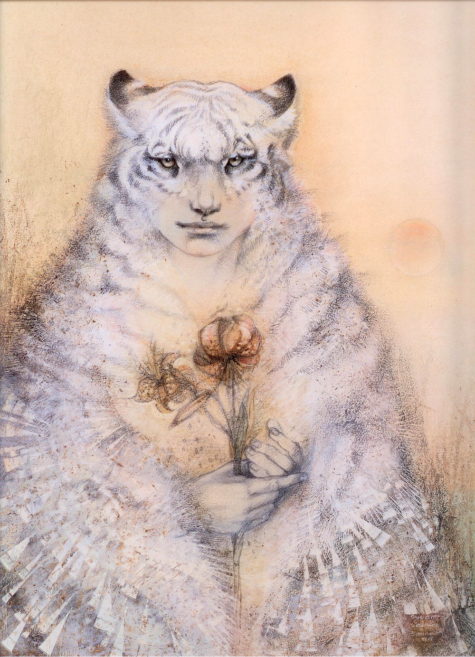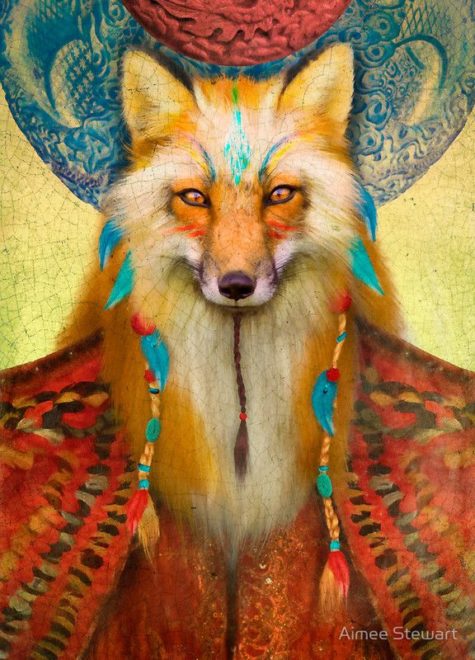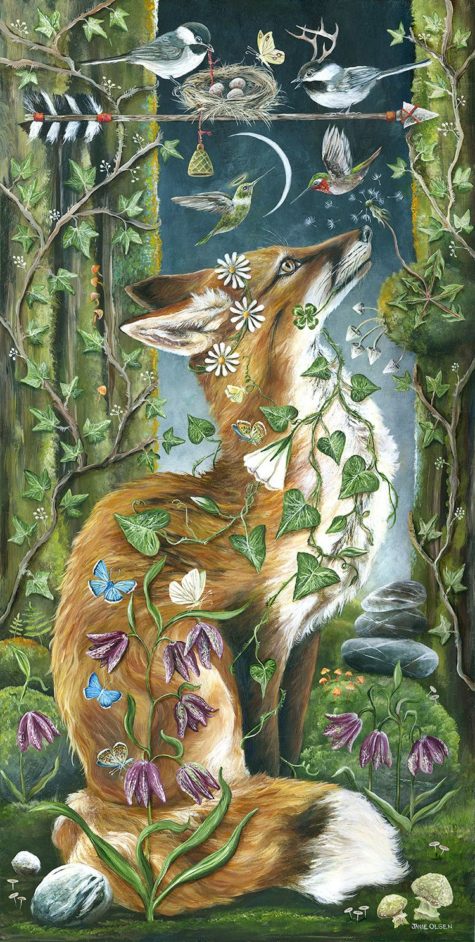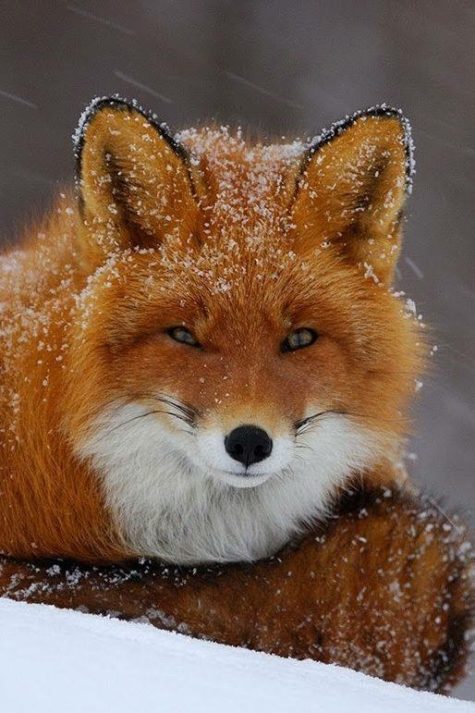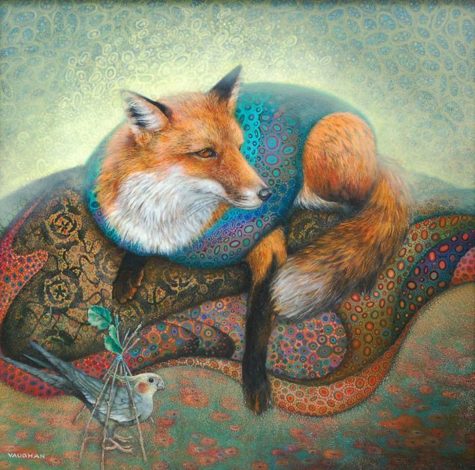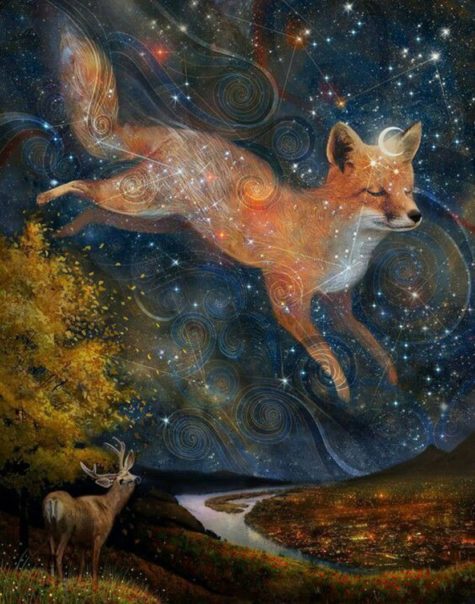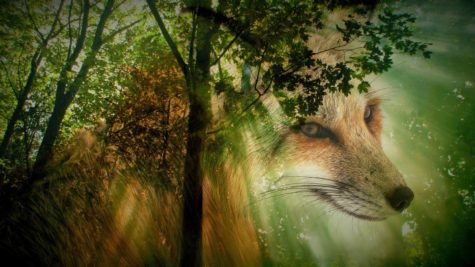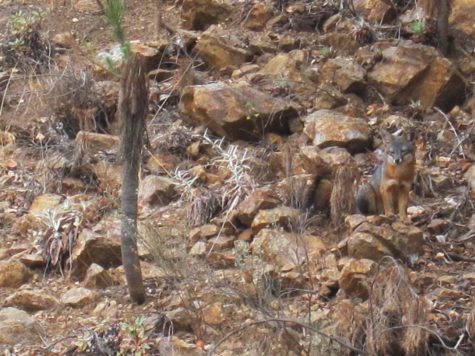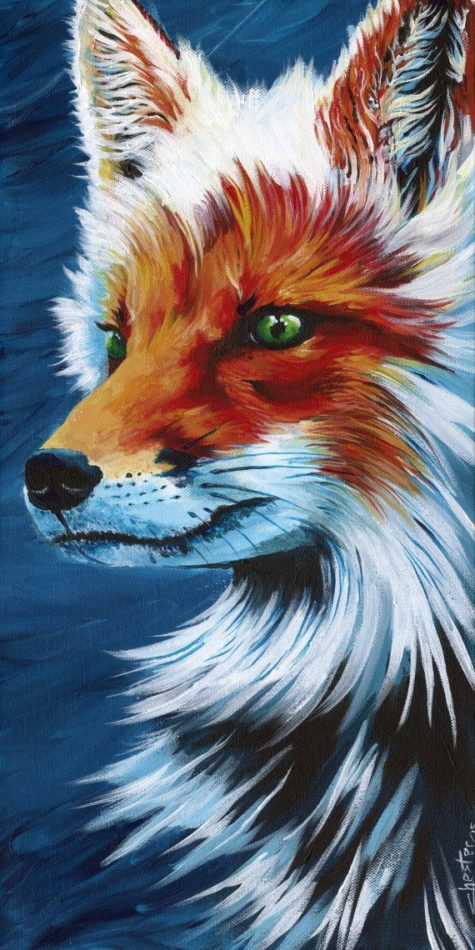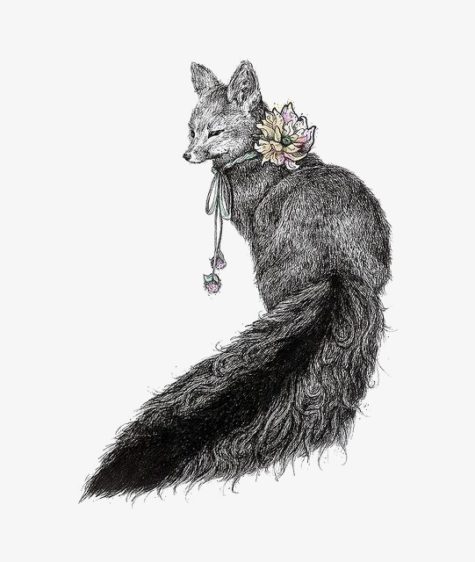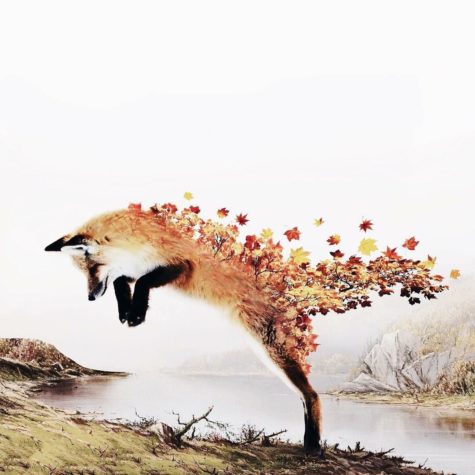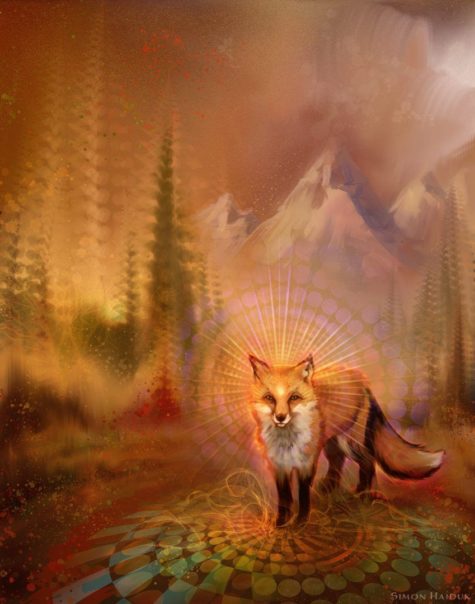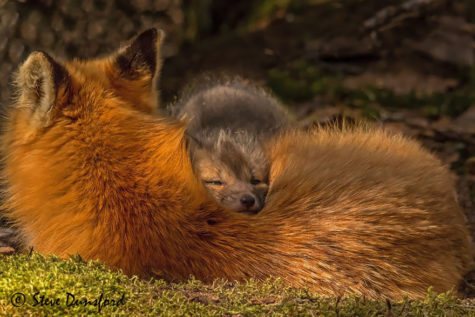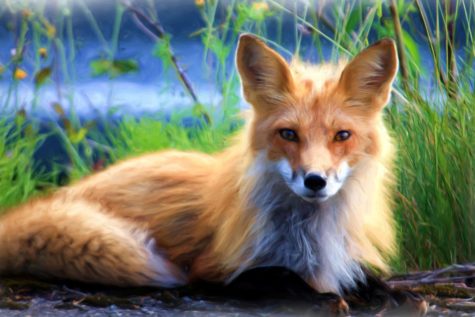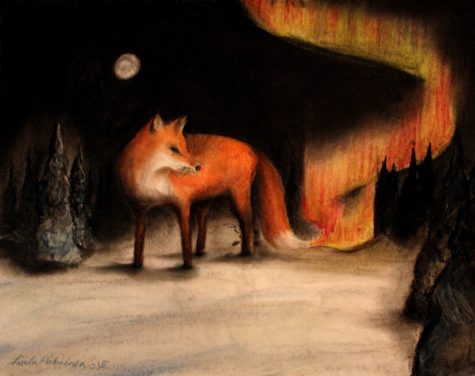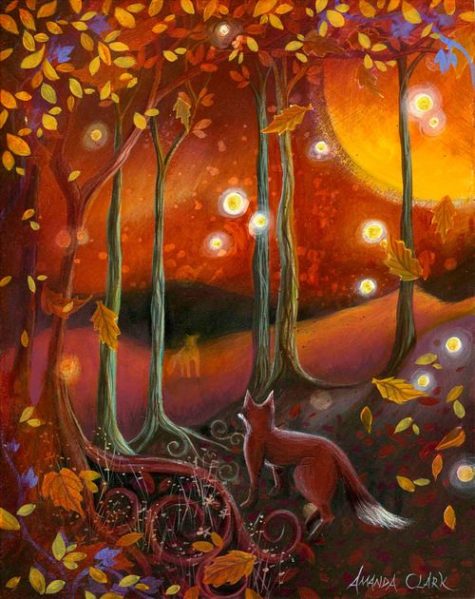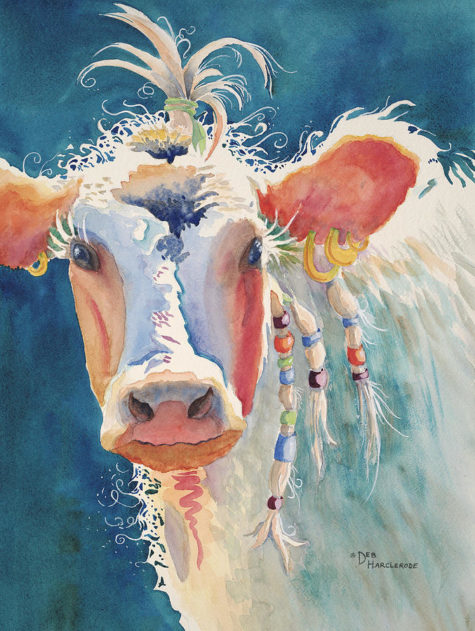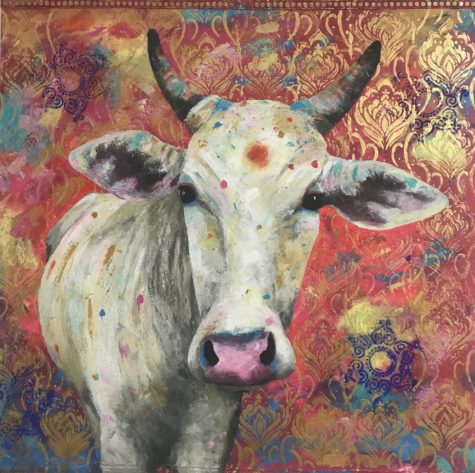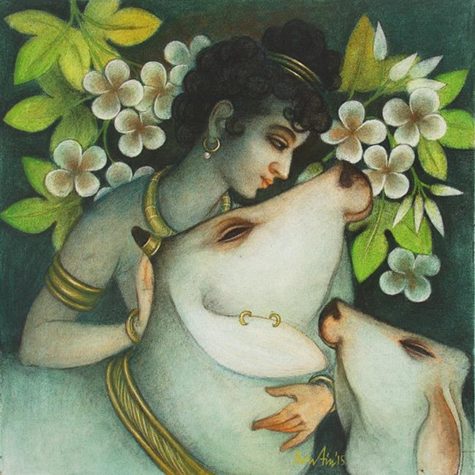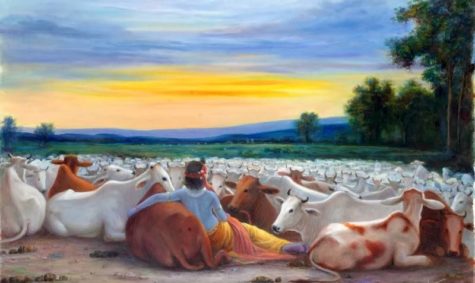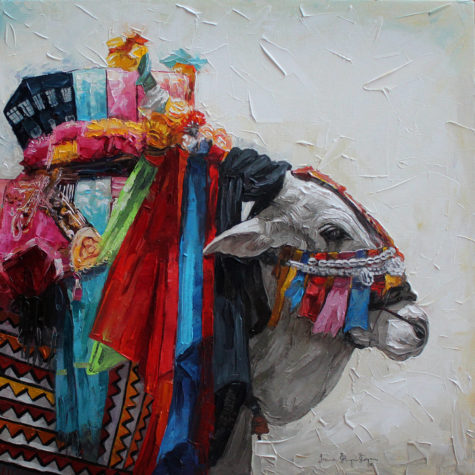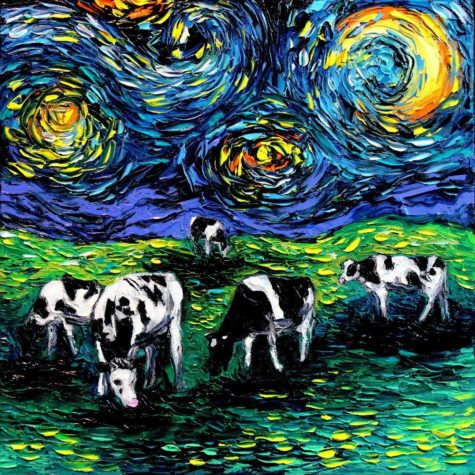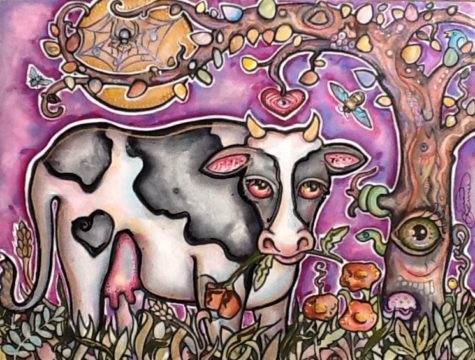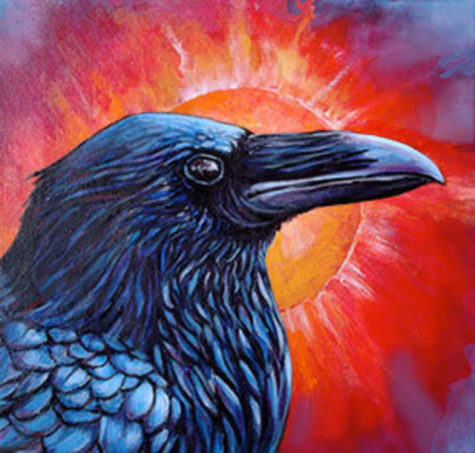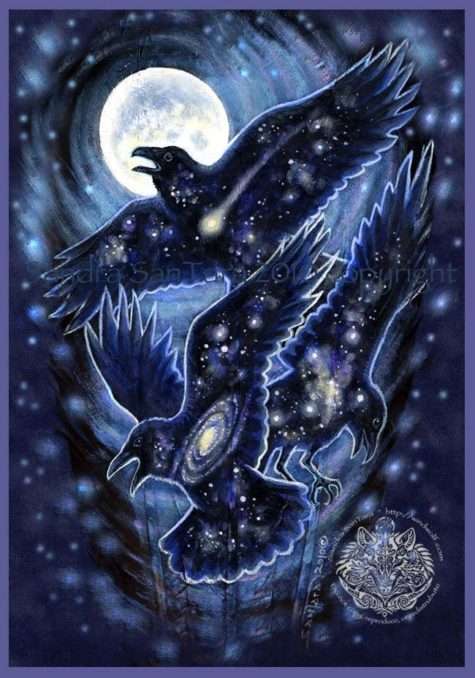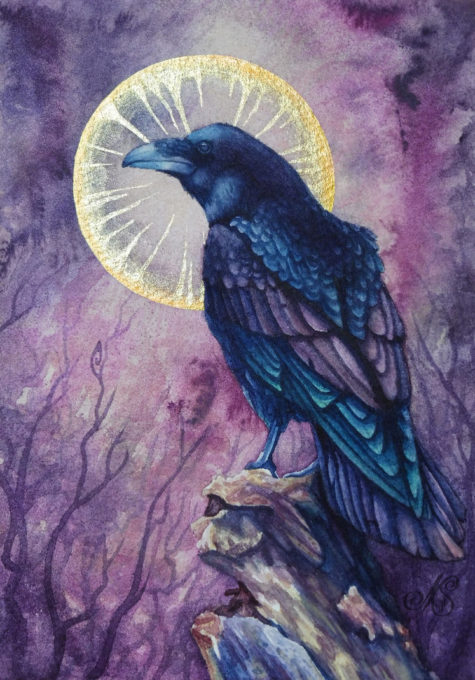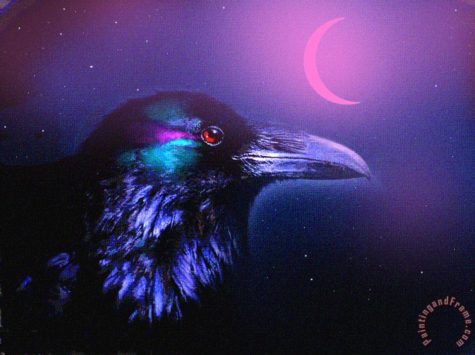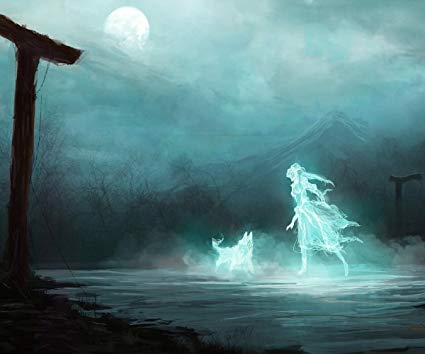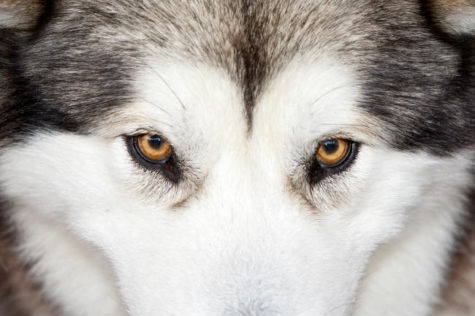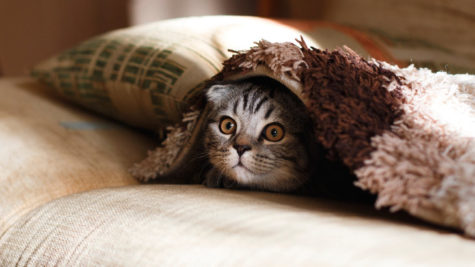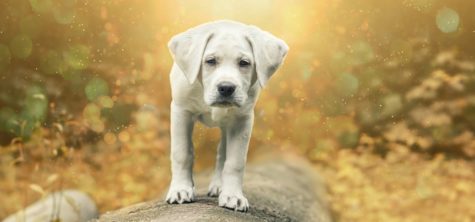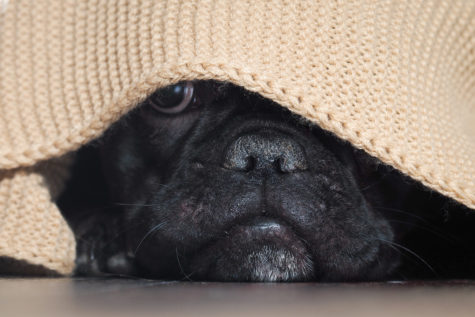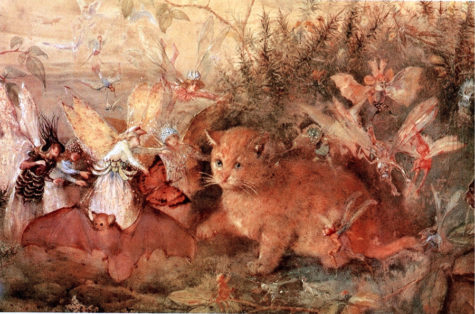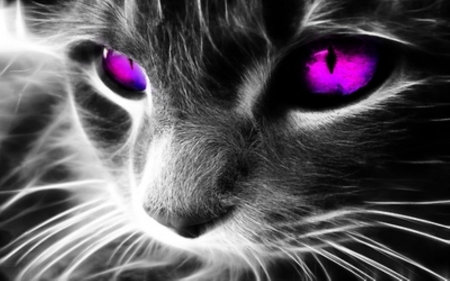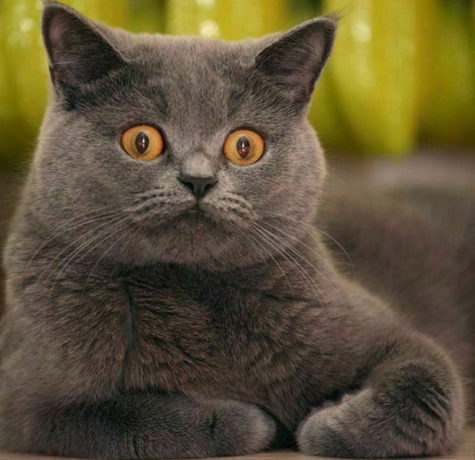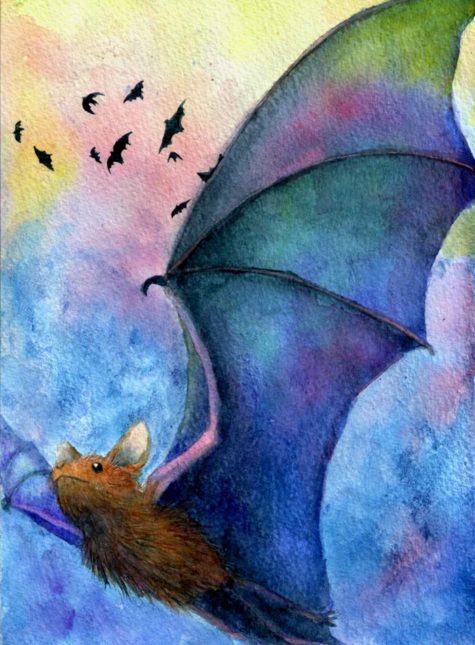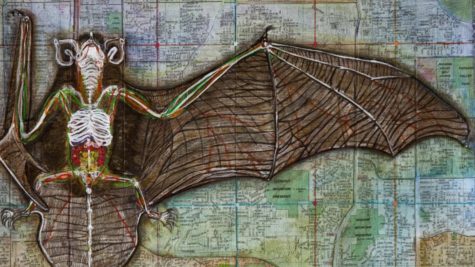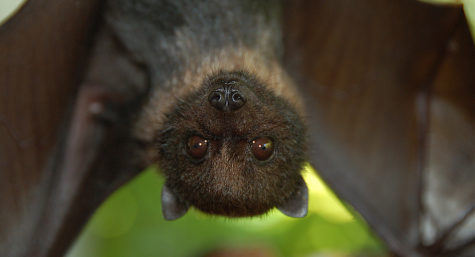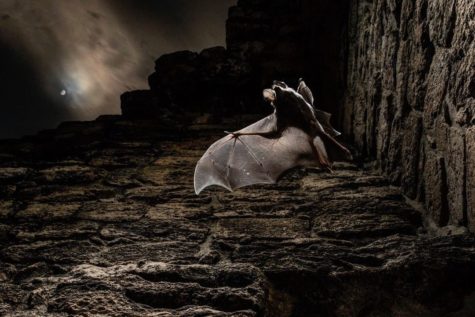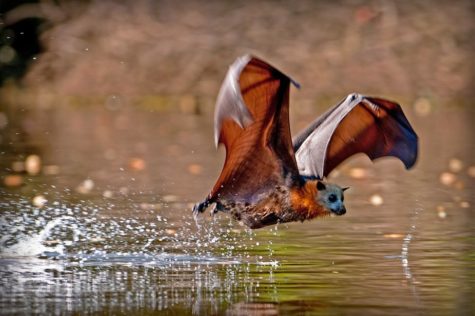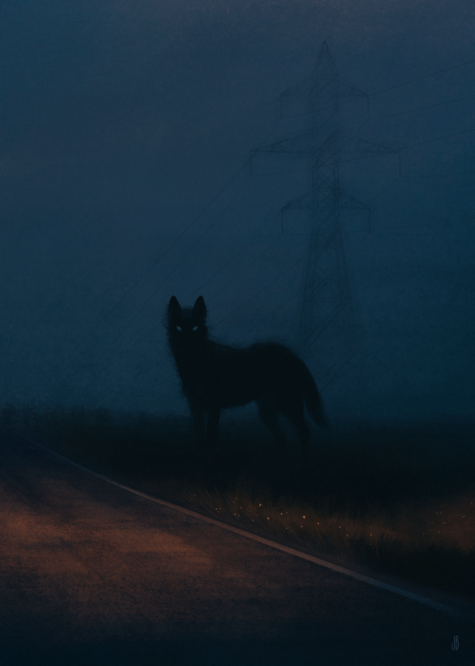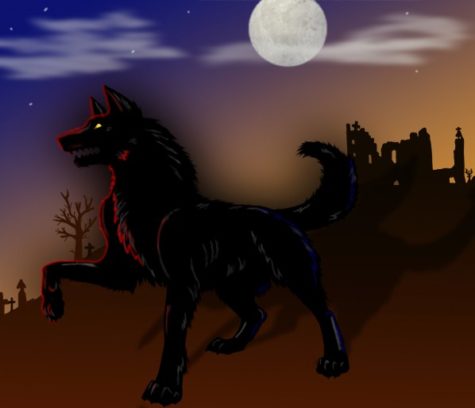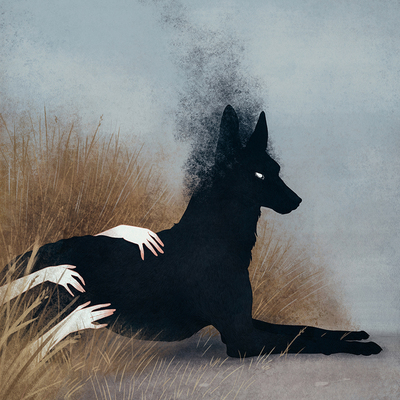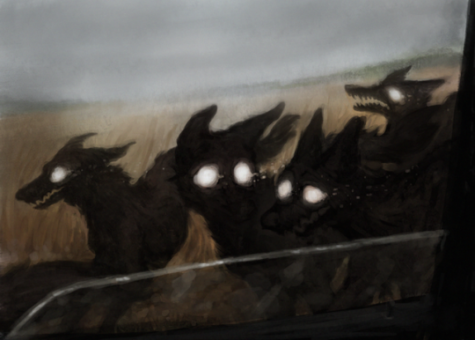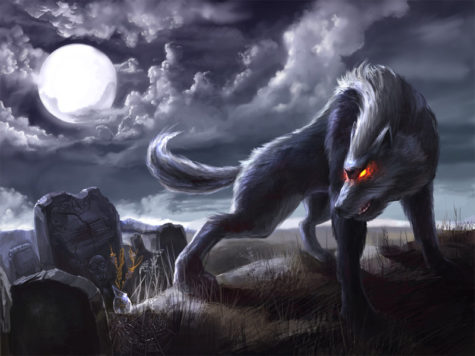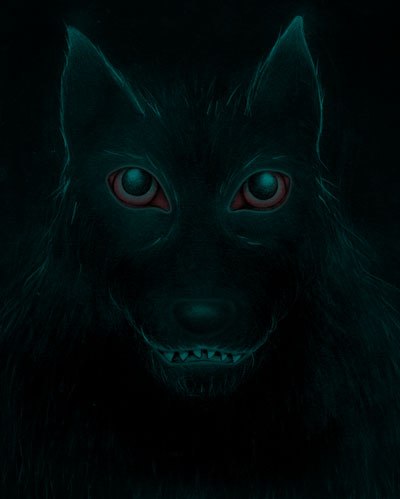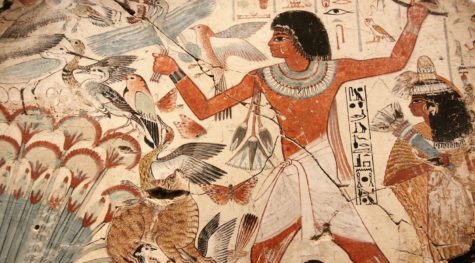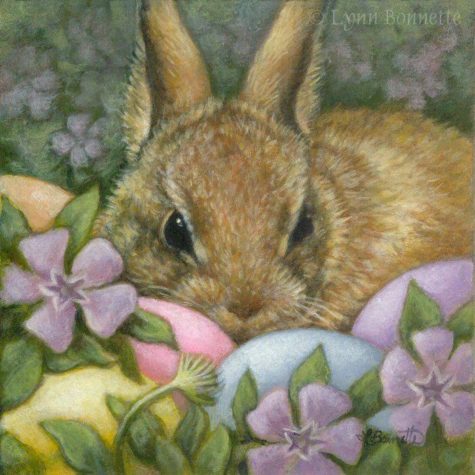Animal Guides and Totems
The animal kingdom is very important to those who immerse themselves in natural magick. Sometimes you may want to communicate with animals or simply see the world through their eyes. A simple spell for merging your mind with animals is as follows:
Center yourself by sitting or lying upon the ground, closing your eyes, and imagine a whirlpool of energy surrounding you, travelling in clockwise motion from your head down to your feet, back up to your head, and back down to your feet. Continue this imagery until you feel grounded and centered, oblivious to daily distractions and cares. Once centered, allow your mind to wander to the animal you wish to merge with. Don’t force the imagery, rather allow it to happen.
Picture the animal clearly in your mind. Watch it, empathize with it, feel yourself merging with it. Imagine what it is like to be the animal. Imagine the sights it sees, the smells it senses, the motivations and ways of thinking it may have. Become those thoughts. Merge with the animal by dissolving the distinctions that make it separate.
Once you have fully merged with the animal, you can communicate with it. Ask it what you want to know. Tell it what you want it to know
Source: simplemagick.com
- Keynote: Feminine magick of camouflage, shapeshifting, and invisibility
- Cycle of Power: Nocturnal, Dawn, and Dusk
- Key Words: Wisdom, Cunning, Strategy, Cleverness, Adaptability, Quick-thinking
The fox is a totem that has touched almost every society on the planet. It is a totem that speaks of the need to develop or the awakening of camouflage, invisibility, and shapeshifting. It is one of the most uniquely skilled and ingenious animals of nature. It can teach these skills to those whose life it enters.
The fox has a long history of magick and cunning associated with it. Because it is a creature of the night, it is often imbued with supernatural power. It is often most visible at the times of dawn and dusk, the “Between Times” when the magickal world and the world in which we live intersect. It lives at the edges of forests and open land – the border areas. Because it is an animal of the “Between Times and Places,” it can be a guide to enter the Faerie Realm. Its appearance at such times can often signal that the Faerie Realm is about to open for the individual.
The fox encourages us to think outside of the box and use our intelligence in different, creative ways. The fox also brings us a message to try to approach our circumstances differently that we normally would. Be aware of some of our habits, and try a different angle of action.
The fox also a reminder that we must utilize all of our resources (seen and unseen) in order to accomplish our goals. Sometimes this means calling upon some unorthodox methods. Furthermore, the fox is a sign to be mindful of our surroundings.
Phenomenally effective shape-shifters and incredibly adaptable, the fox beckons us to not make too many waves but rather, adapt to our surroundings, blend into it, and use our surroundings (and circumstances) to our advantage.
The fox has an incredible amount of knowledge and wisdom to share with us if/when we are willing to be still for the teachings. Spend some meditative time with the spirit of the fox – odds are you will be amazed at the powerful insight this regal creature has to offer you.
The Lore of Foxes
In the Orient, it was believed that foxes were capable of assuming human form. In ancient Chinese lore, the fox acquires the faculty to become human at the age of 50, and on its hundredth birthday, it becomes either a wizard or a beautiful maiden who will ultimately destroy any man unlucky enough to fall in love with her.
In Japan, the fox is a particularly good influence. It is both a symbol of fertility and sacred to Inari, the God of Plenty. Inari often takes on the form of the fox, and shopkeepers, housekeepers, and businessmen of the Shinto faith keep a little shrine in their homes dedicated to this fox God, so that he will watch over their affairs.
There are several American Indian tribes that tell tales of hunters who accidentally discovered their wives were foxes. This is very symbolic of the idea of magick being born within the feminine energies, and that unless a male can recognize the magick of the feminine – in himself or others – and learn to use it to shapeshift his own life, it will ultimately lead to destruction.
The Cherokees invoke fox medicine to prevent frostbite, and Hopi shamans always wear fox skins in their healing rites. The Choctaw saw fox as the protector of the family unity. Apaches credited fox with the killing of the evil bear, and for sticking its tail fur into the flame and stealing fire for humans.
The Celts believed the fox to be a guide, and was honored for its wisdom. The Celts understood the fox knows the woods intimately, and they would rely upon the fox as their guide in the spirit world.
In other societies, fox was also held in high esteem. In Persia it was sacred, for it helped the deceased get to heaven. In Egypt, fox fur was thought to bring favor with the gods. The Indians of Peru had a fox god. The fox was often believed to reward those who did it service.The fox is the totem animal of Dionysus, whose seductively foxy priestesses wore fox skins.
Early Christians associated the fox with that most cunning of tricksters, the Devil. The Fox Spirit of Japan and Korea is a shapeshifting often evil spirit called a Kitsune. You can read more about Fox Spirits here.
To Say To A Fox
When fox-red suns
Burn low in the south,
The cold fox turns
To famine and death;
But leave by his house
Four rats, three birds,
Two hares and a mouse
And these warm words:
Fox run round
And favor my ground;
Eat from my hand,
Fatten my land
Who feeds a fox
Should suffer no loss.
Fox Symbolism
The symbolic meanings associated with the fox are:
- Physical or mental responsiveness, increased awareness
- Cunning; seeing through deception; call to be discerning
- Ability to find your way around, to be swift in tricky situations
- Affinity with nocturnal activities and dream work
- The seducer, or seductress
- The magick of pure luck
- The energy of mischief and opportunity
- Play, charm and magickal allure
- The Svengali effect ~
- Playfulness, light-heartedness, glorious playful enthusiasm.
- Beauty and elegance
It is noteworthy to observe the fox while it is on the hunt. We see its entire body is pointed like an arrow – straight and tightly aimed. This is a symbolic message for us to set a determined, and powerfully focused mindset in order to “hit the target” of our desires.
Red Fox Symbolism:
The Red Fox carries with it the symbolism and totem powers of passion and energy, in touch with the primordial Earth spirit, having confidence that the Earth supplies for all of it’s needs.
- Gray Fox and Silver Fox Symbolism:
The Gray Fox also known as the Silver Fox is a symbol of being debonair, svelte, and in good taste. His discreet manner is that of nobility and refinement. The fur of the Silver Fox is almost iridescent as it sparkles in the sun, capturing the essence of wealth and good fortune.
- Arctic Fox Symbolism:
The Arctic Fox is a sign of magick amidst the ordinary, capable of invisibility with the cloak of snow surrounding, it, magick is most definitely afoot when the Arctic Fox appears for you.
Fox As A Spirit Animal
The fox is often associated with the figure of the trickster, but as a spirit animal, it can also turn into a teacher providing guidance on swiftly finding your way around obstacles. If you follow the fox totem wisdom, you may be called to use or develop quick thinking and adaptability. Responsive, sometimes cunning, this power animal is a great guide when you are facing tricky situations.
When the fox appears in you life as spirit animal, it encourages action and quick, swift moves. You may be called to take action in a way that shows your adaptability and ability to move quickly through obstacles and resistance.
Being inspired by a fox totem, you can work at developing the sharpness of your mental skills: Analytical intelligence, power of deduction, observation can come into play more powerfully in how you deal with daily matters or bigger projects. The spirit of the fox may also imply that you are sharpening your physical alertness and responsiveness.
Fox Spirit Guides and Deception
The fox is known for sneaking into homes and getting away without being caught. Because of it’s characterized by its cunning ability, this animal has acquired the image of trickster in a number of cultures.
When the fox appears in your life, it may indicate that you need to pay attention to people or circumstances that may be deceiving or tricking you into going down a path that does not necessarily serves you. This spirit animal may call you to be more discerning in relationships, whether it’s in business or friendships, or in choices you make for yourself.
Following the fox totem wisdom, look for any area of your life where you may be cunningly led to do something else than you would in all reason do. Use discernment in your choices and actions.
Foxes and the Art of Invisibility
The coat of the fox serves as camouflage, and most fox coats have variations of color within them. This facilitates their ability to stay camouflaged and remain relatively unseen. Practicing and using camouflage is something everyone with a fox totem should learn to do. Working to blend in with the surroundings, to come and go unnoticed, moving silently about without revealing your intentions is all part of what fox teaches.
Much of this is reflected in learning to control the aura, the energy field around your body. You can adjust its frequency and intensity so that you harmonize more with others. You can focus on changing its appearance so that you blend in. Practice by standing against a wall and see yourself (and your aura) becoming the color of the wall, just as if you were fading into it.
The next time you go to a party, take a seat in a chair or on a couch and see yourself as a fox that blends in perfectly to its surroundings. Remember that a fox is most often ween when it is out in the open, so visualize yourself as taking on the color and pattern of the chair. Then sit quietly and watch how many people, accidentally bump into you or even begin to sit on you because they did not “notice or see” you there. You will be amazed.
Practice seeing yourself as a fox when you enter or leave a party or gathering. See yourself as blending into the gathering, melting into it. Do not be surprised as the night goes on when people make such comments as, “When did you arrive?” “How long have you been here?” “I didn’t see you come in,” or “When did you leaved?” The more you work with fox, the easier this becomes.
The historical character of Merlin had to have used fox medicine and energy to accomplish much of what he did, but he practiced it. Even during his life time Merlin was largely unknown to the greater public, except as “Merlin.” When he was summoned by kings or needed desperately to recruit other allies, he came silently, disguised as a poor shepherd, as a woodcutter or as a peasant. Even the sovereigns failed to recognize his in his various disguises. He practiced concealment habitually and for a long period of time.
For those with fox totems, it will be important to learn this art of camouflage, and its related arts of invisibility and shapeshifting. The fox uses its ability at quiet camouflage to its benefit. With practice you can develop this same kind of ability and apply it so that you may see and hear things you otherwise could not.
About Fox Fur
Hair and fur are ancient symbols for energy and fertility, and layers of fur reflect levels of energy and levels of fertility. With the fox it is the undercoat which is the primal energy source from which an individual draws his or her abilities. The outer layer protects and defines how that energy is being used by the individual. As the outer hair changes so does the expression of the inner creative force.
Hair should become very important to an individual with a fox totem. If a change is needed on certain levels, learning to change the hair to reflect the change desired helps to activate fox energy so that shapeshifting can begin.
The overall thickness of the fur makes the fox look much larger than it really is. This is especially significant for those with fox totems. These individuals have the ability to make themselves appear larger than they actually are. Because of this, an individual schooled in working with this aspect of fox medicine can use it to his or her advantage, for personal protection or for making greater impressions in various areas of his or her life.
About Fox Tails
The brush or tail has always been considered the most sacred part of the fox, although this is not necessarily true. It does hold great significance for one with a fox totem. When it runs, the fox tail is always in a horizontal position out from the body. This acts as a rudder. This horizontal position is the feminine form.
Thus the fox tail is a symbol of directly guiding the feminine creative forces. It is especially beneficial to the fox when making abrupt and sharp turns. If the focus stays on the creative energies, any sharp turn in the individual’s life will be accomplished with ease.
The tail also serves as insulation from the cold for the nose and feet, as the fox wraps itself up in its tail. Individuals with fox totems have an ability to insulate themselves from anything that may seem to be cold, especially in relationships. They can become warm and cozy in themselves.
About Fox Activities
Although a fox dislikes getting wet, it is an excellent swimmer. This is also very significant, for it says something about the innate character of those with a fox totem. They have learned to draw upon and express the feminine energies, the creative force, in the outer world. For them, there is no desire to go back into the waters of life (feminine), but they will do so if it is necessary.
The legs of the fox are adapted for running. There is a tremendous stamina to them, an ability they can bring to others. Their favorite gait is a trot, and it is believed that they can trot indefinitely without exhaustion or the appearance of such. Few animals of a similar size can outrun a fox. Learning to establish a trotting pace is essential to those with a fox totem for their overall health and success. The fox also runs in such a way that the tracks look like a single line of footprints. During the trot the feet are placed almost directly one in front of the other., This reflects a straight-forward expression of the feminine energy.
Fox walks and runs on its toes, something very catlike. This is also significant for the fox is part of the canine family (dog), but it embodies a feline characteristic. The feline is the feminine energy given greater expression and movement. This quality reflects a need to assert the feminine, creative energies.
The fox also has the ability to run up trees if it is necessary. This reflects an ability to move into new dimensions and call upon new resources instinctively. The gray fox particularly has the ability to climb a tree much like a cat would, by using the claws of its back feet to push it up.
About Fox Senses
The senses of the fox reveal much about the potential within those who have it as a totem. Its hearing is very acute. They are like mini-antennae. They can pick up the squeal of a mouse over a hundred and fifty yards away. Those with fox totems have an excellent ability to hear what is not being said, as well as any whispering that may be going on. This ability is also tied to clairaudience, the ability to hear spirit.
The fox also has excellent eyesight. In fact they have elliptical eyes, just like a cat. They are color blind, but they have a great ability to see varying shades of lightness and darkness. This gives an individual the ability to size people up very accurately. They also have a great ability to see moving objects, especially at the edges or borders of areas. Because of this, it is not unusual for those with fox totems to develop the ability to see spirit; actually see those beings of the “Between Places,” the fairies and the elves. This will happen if fox has come to you.
By far its keenest sense is the sense of smell. It hunts as much or more by smell as by the other senses. The fox is fascinated by unusual odors, and those with fox totems respond strongly to smells, detecting subtle differences in odors. Smell is one of its forms of social communication – deciding who to socialize with. It would be beneficial for anyone with fox medicine to study aromatherapy.
Sexually, the sense of smell is one of their strongest stimulants, and it has a key impact on the degree and intensity of arousal for those with fox medicine. There is strong connection between fragrance and sexuality, and for those with fox medicine this is critical.
The sexual energy is our most creative energy; it is part of the kundalini energy force within the body. This force is critical in all activities. If controlled and channeled, it can be used for a variety of purposes – one of the most dynamic being for the art of shapeshifting. A fox entering one’s life as totem may reflect the awakening of the kundalini. Such an individual to whom fox comes often has a great capacity for sexual expression with an ability to practice it in rich and varied ways – often with little inhibition. This aspect may often be camouflaged until the right moment.
The sense of smell is also associated with higher forms of discrimination and discernment. One working with fox medicine should sniff out each situation. This will let them know who to avoid and who to connect with. Does this person smell right? Does something smell funny about this situation?
About The Fox Family
Most foxes have only one partner. They are very monogamous. They also live alone for about five months of the year. They are often solitary and comfortable with that state most of the time. The red fox vixens (females) search for a den usually only when they are pregnant. If possible they return to that same den year after year, adding to it and making it larger and more comfortable.
This same quality and love of the home is found in those with fox totems. Although foxes are territorial and travel within that territory, they do return to their home, their den. Those with fox medicine may find themselves as territorial in their activities, but also inclined to return to their home and improve it.
A litter of fox cubs usually numbers from one to six. They are blind and deaf when they are born, but they move from that extreme to one of great sight and great hearing as they get older. If the cub survives its first year it will usually live several more, establishing its own territory. This reflects that those with fox medicine may have their greatest tests in childhood, but also their greatest instinctual education in the art of survival.
The Vixen
The name for the female Fox is Vixen. For humans, a vixen has always had the reputation of being a dangerous femme fatale. Having the ability to lure in males and send them away just as quickly, without a second thought, or lure them into danger.
The reason for this association is that when the Vixen is ready to mate, she sends out a scent to lure her mate who is the same mate year after year. He then picks up her scent and faithfully returns to her.
After mating, however, the female sends her mate away again, to raise her young on her own. She will beckon him again to return only when her kit has grown and left her side, and she is ready to mate yet once again. She is so irresistible that he returns year after year.
The Vixen makes the rules of the relationship! The Vixen has a message for today’s women; know your worth, define your boundaries and the right man will find you irresistible!
About Foxes As Hunters
The fox is a survivor and a great hunter. In spite of encroachment on its territory and the history of being hunted it has been exposed to, it still manages to survive. Its instincts are great.
Foxes are dainty, graceful, and lightfooted in hunting. They actually hunt more like a cat, often leaping upon their prey and holding it with their front paws. The fox is crafty and patient, and it will lie in camouflage intensely studying its prey until just the right moment to attack.
Probably the fox’s cleverest hunting technique is “charming.” In this technique, the fox is seen near a prey, performing various antics. It will leap and jump and roll and chase itself, so that it charms the prey’s attention. While performing, the fox draws closer and closer without its prey realizing, as it is caught up in its seemingly non-threatening antics. Then at the right moment, the fox leaps and captures its prey.
This is a camouflage technique, one associated with behavior. It is one that those with fox totems can use to capture any prize. As you develop attunement to the fox and learn its magick, any prize can fall to you.
When You Dream of a Fox
When Fox appears in your dreams, it may be telling you that there is a circumstance which calls for you to be very clever at this time, to look for new ways of approaching a situation or challenge. What areas of your life could use this kind of help? Fox can show you new ideas and new ways of doing things, sit in silence and let the fox show you.
Fox could be showing up in your dreams to guide you to opportunity, an opportunity that could prove to feel serendipitous and lucky.
A female Fox is like Wonder Woman! She could be telling you that you are more independent and resourceful than you realize, and she can show you how to tap into this aspect of her super powers. She is also saying that charm goes a very very long way in getting things to go in the most favorable and “luckiest” of ways!
Foxes are also considered quite magickal in Japanese lore, so you may be dreaming of Fox because she wants to recommend adding some magick to what is needing your attention. Consider a ritual or crystals or anything that feels magickal to you.
Fox Folklore and Superstition
Country people have always admired foxes for their cleverness and courage even though they disliked them for their raids upon the poultry-yard. The folk tales of every country where they are found testify to this fact, from remote times down to our own. In some parts of Europe, a fox’s tongue was worn as an amulet to make the wearer bold; in others, the same effect was achieved by cooking and eating it.
The fox was one of several creatures into which it was once believed that witches could, and did, turn themselves at will. In England, the witch-animal was more usually a hare, but there are a number of fox stories also.
As late as the end of the 19th century, the people of Kirtlington, in Oxfordshire, spoke of a local woman who transformed herself thus. A fine fox was often seen near her house and was frequently hunted, though never with success. On one occasion, the hounds were so close behind it that escape seemed impossible, but the fox made a sudden turn and rushed into the witch’s house. When, a few seconds later, the huntsmen followed it, there was nothing to be seen but a woman sitting quietly by her fireside.
Certain families in Ireland were traditionally said to be descended from foxes, as others there, and in Scotland, were supposed to be descended from wolves or seals. Such fox-families were warned of a coming death by the appearance of many foxes around their house. It is perhaps because of this legend that in other parts of Britain a fox entering or coming close to a house is thought to be a death omen.
Welsh people think it lucky to meet a single fox, but unlucky to see several together. A Lincolnshire belief recorded in “Folk-Lore concerning Lincolnshire” (1908) is that if anyone is bitten by a fox, he is marked for death within seven years.
An old method of drawing out an obstinate thorn embedded in any part of the human body was to lay a fox’s tongue on it. This had to be done at night, just before going to bed. In the morning, the thorn would have come out, even though it had previously resisted every attempt to extract it by the use of poultices or other remedies.
A cure for whooping-cough was to put down a dish of milk where a fox could drink it, and then to let the patient drink what was left when the fox had finished.
In many parts of England, it is still firmly believed that foxes dispose of their fleas periodically by taking a piece of sheep’s wool in their mouths and wading with it into a pond or stream until only their noses are above water. The fleas, to escape drowning, take refuge in the wool, and the fox then lets it fall into the water, thus ridding himself of these pests.
This curious piece of natural history is found in numerous districts, and many countrymen assert that it is quite true. In Oxfordshire recently, one man said that, because there are no sheep in this part of the country, the local foxes use bunches of dry grass instead of wool. He had, he said, “seen ’em at it, scores of times.” What exactly he, and other eye-witnesses have seen is not clear, but faith in this vulpine maneuver is still very common.
Sources:
- Spirit Animal
- Animal Speak
- Element Encyclopedia of Secret Signs and Symbols
- The Encyclopedia of Superstitions
- What’s Your Sign
- The Universe of Symbolism
- Crone’s Book of Magical Words
Because of its milk that is a staple food for many human beings, the Cow is arguably one of the most useful animals in the world. It was one of the first animals domesticated by humans, and its symbolic importance is rich. It is emblematic of fertility, abundance, wealth, the universal Mother, and of rebirth. The Cow is also a gentle and compliant creature.
In Vedic literature the Cow is also a symbol of abundance and fertility as it represents both earth and sky. To Hindus and Buddhists, symbolism of the Cow deals with patience and holiness.It is considered India’s most sacred animal. The calm, tender nature of the Cow wins this right among the Buddhists.
The Cow as a sacred animal is a fundamental part of Hindu iconography. In India the Cow is so revered, and treated so gently, that it often causes a traffic hazard as it ambles along busy city roads. There are several reasons for the sacred status given to the creature. Not only does the Hindu faith have respect for all animals (vegetarianism is a tenet of the faith), but the God Krishna was a cowherd for a time, and one of his names is Bala Gopala, “the child who protects the cows.”
Hindu deities rule over each and every part of the Cow. During times of famine, the Cow is far more useful as a creature that can produce limitless amounts of milk, then as a dead beast that would provide meat for a limited period only.
In Egypt the Cow was personified as Ahet, the mother of the Sun itself. To make themselves fertile Egyptian women wore amulets of the Goddess Hathor, with the head of a Cow, in her guise as the Creator.
In Norse mythology the Cow makes an appearance as Audhumla, the mother-ancestor of all living things, whose utters emitted the four rivers of power – these provided nourishment for the giants (primarily the first giant, Ymir) that ruled the First World.
In Celtic mythology the Cow is sacred to the Mother Goddess Brigit who also governs the Earth, mothers, children, health, nurturing, providence, and the full range of the Female element of the universe. This symbolism remains consistent with that of many other cultural settings and supports Cow as representing life’s fragile beginnings and the necessity to safeguard and restore those who have no voice or support.
In Greek myth, one of the names for the great Cow was Europa, which means “full Moon.” The stars were said to be the children of Europa.
In Lancashire folk-speech, the name “cow’s lane” was sometimes given to the Milky Way, the traditional path of souls, as it was also in some parts of Germany. This may be connected with the old north European belief that whoever gave a cow to the poor during his life would be guided by that cow along the perilous soul-road after his death, and so would be sure of reaching Heaven in safety.
Once, there was a custom whereby the cow was brought to the sickroom, and in what must have been a distressing and rather frightening ritual, the dying person was encouraged to grasp the tail of the cow as he breathed a last breath.
This psychopomp aspect of the Cow is still celebrated in the Nepali festival called the Gai Jatra or Cow Festival. In a boisterous celebration, every family that has lost a member during the course of the year has to take part in a procession, leading a Cow, or if no animal is available, then a child dressed in a cow costume is considered to be a fair substitute. The Cow is believed to guide the soul on its final journey, including a voyage through the Milky Way, the constellations of stars said to be the milk splashed by the great Cow that was the mother of the Universe.
Red cows appear in some pagan creeds as personifications of the dawn, or clouds, or lightning. It is possible that they had some special significance for the ancient Hebrews also, since it is definitely stated in Numbers 19:1 that the victim offered for the purification of the people must be “a red heifer without spot, wherein is no blemish, and upon which never came yoke.”
In England the milk of a red cow was formerly supposed to be superior to any other, and to have healing properties. Such milk is often specifically mentioned in 17th and 18th century medical books as an essential part of remedies for various ills, particularly for consumption and chest ailments. Red is, of course, a life-giving color in mythology and folk tradition alike because it is associated with fire and with blood, and red objects of various kinds figure constantly in healing charms and folk remedies.
According to a French legend, Cows always have a sweet breath because when Our Lord was born in the stable at Bethlehem, a Cow, seeing Him shivering in the cold, warmed Him with her breath and drew the hay over Him with her lips. As a reward for this act of kindness, she was promised that her breath, and that of all her descendants, should ever afterwards be sweet, and in addition, she was given the privilege of carrying her calf for nine months, like a Christian woman with a soul to be saved.
Cow Symbolism
The Cow is a lunar symbol, aligning itself with feminine (yin) qualities among the Chinese yin-yang energies. A quick-list of Animal symbolism of the Cow would include:
- Patience
- Nourishment
- Abundance
- Fertility
- Female Power
- Potential
- Possibility
- Calming
- Grounded
- Provision
- Beginnings
Because you’re seeking out Cow symbolism and meaning, a deep stirring must be happening in your soul. Cows represent motherhood, Mother Gaia, and the Mother Goddesses. Take time to meditate on all Mother Cow has to offer. She is a sacred reminder of fertility, birth, and nurturing.
- When Cow appears as your Spirit Animal trust that the mighty storm will pass and you’ll be OK.
- Cow as a Totem Animal belongs to those with profound Mother Goddess instincts.
- Call in Cow as your Power Animal when your soul needs TLC.
The Cow Totem
Those who know Cow as their Totem Animal supply a sense of stability and solid, loving, growth-oriented relationships with self, others and the environment.
Cow people have the ultimate “mother’s intuition.” They can feel when others are out of sorts – when their auras are “scratchy” – and they always seem to know just what to say or do to help. Somehow, folks heal more quickly when in the company of Cow Totem Animal people.
If Cow is your Totem Animal, always remember that one cannot feed others from an empty trough. Though you were born with the natural instinct to take care of the world, YOU are part of it. Your needs are just as important as everyone else’s. A wise Cow mama know when to take a break and nourish her own mind, body, and spirit.
We should always work to have a positive and happy home environment. If we don’t, we should inquire deep within as to how we can change that. Calling upon the Cow animal totem, we can learn how to make basic changes that are needed to balance the joys in our surroundings.
Like its family member the bull, the Cow totem is highly connected to nature, the Earth, and its continuation through reproduction. Cows are very generous with their lives and behave in the most selfless of manners.
Among fertility and femininity, these mother creatures represent the virtuous traits of sustenance, abundance, potential, calming, grounding, and provision. They also serve as an uplifting sign of female power and prestige, since they are, after all, crucial to the continuation of any species.
New beginnings are also a theme associated with Cows in conjunction with their maternal auras. Through their pregnancy, birth, nourishment to their offspring, and ultimate bodily gifts, Cows show the entire life cycle in its bittersweet beauty from start to finish.
The female Cow totem is linked to its male counterpart, the bull, through the symbolism of fertility and reproduction. While the male totem exemplifies nourishment through its slaughter or sacrifice, a Cow symbolizes birth and motherhood.
Cow symbolism assists us in understanding and embracing fertility and the relationships necessary for it. It is a soft and nurturing creature that arouses the soft side in each of us. The two animals are directly connected, as they are both needed to create new life.
These animals illustrate both the masculine and feminine qualities that exist in every being. The bull is characterized by bold and rigid energies, while the Cow is far more gentle and tranquil. They remind us to constantly ensure that these energies are in harmonious balance.
Cows As Spirit Guides
The Cow is a very powerful Spirit Animal. While at first you might wonder about the value of such a guide in your life, there is much about Cow to respect.
Like many other animals, Cows as spirit guides have been revered in various religions and cultures around the world. In ancient Egyptian astrology, the Cow served several symbolic purposes, including being worshiped as the goddess of joy and maternal nourisher of all things.
Additionally, they remind us to nourish ourselves physically, mentally, and emotionally. If we neglect the basics of our lives, it will be impossible for us to live happily and thrive. Every day, you should ask yourself if you are eating the right foods, drinking enough water, and exercising both your body and your mind to remain healthy and alert.
Cow reaches out to those struggling with fertility offering motherly advice. You may not always like what Cow tells you (did you like everything your mother told you?), but the heart behind the Cow Spirit Animal is truly one of giving. She always wants what is best for both you and your proverbial herd.
When weathering a storm, be it emotional or physical, turn to Cow as your animal spirit guide and think of how firm Cows stand in vile weather. There is no moving a Cow and no influencing it, but for urgent matters of hearth and heart. Nonetheless, as you stand in your place of power, remember that Cow also gives you keen perceptions. Be on the alert for possibilities or potential peril.
If your spiritual path is working toward the greatest good, Cow guidance is a fantastic helpmate. She will stay with you compassionately with watchfulness, making sure you stay inside the spiritual boundaries you’ve set.
Cows are lunar, divine feminine energy. If you’ve ever looked into a Cow’s luminous eyes it’s easy to feel how loving they truly are. But, as soft and magickal as moonlight is, never forget it is the moon which is mighty enough to influence all the waters of the earth. The divine feminine is just like that. Pliable and giving, but it should never be mistaken for weak.
Cows are a simple creature that get their joys from life’s basic pleasures. From this, they aid us aid us in remembering to be easy going and live in the moment. Often times, we ignore the innocent and plain moments that make our lives wonderful.
If we can manage to clearly assess our lives, we will be reminded to thank our family members and those close to us for all that they do to make our lives joyful. Simply appreciating your community can change your mentality greatly, having positive effects on both your outlook and your body.
One of the Cow symbol’s main spiritual messages is to never take this for granted, for eventually this life will end.
Cow As A Power Animal
If you want to have children, consider carrying a carved Cow totem and invoke Cow as your Power Animal. Cows are powerful symbols of new life. That life need not necessarily be as a parent however. It can apply to new jobs, new homes, and new relationships.
Keep a Cow totem on hand when you need protection from negativity or nightmares. Like the Mother Goddess herself, Cow energy holds you close, reassuring that nothing will harm you.
As a power animal Cow calls on you to love fully. Look at the world and the wonders of creation and let that fill you with all the characteristics you most need to embrace life.
Note, however, that this power animal will not let you give and give and give without refilling. Those that serve need service, including you. Put out a cattle call and let people give back (it blesses them too).
Dreaming About Cows
Lessons of gratitude and the appreciation of sacrifice are prevalent in cow symbolism, especially when presented in our dreams, and we would do well to integrate them into our daily life.
A cow dream symbolizes some important issues. In Hindu culture, cows are sacred and represent fertility, nourishment, and motherhood. Cows also represent personality traits such as passivity and overall contentment. Seeing a cow in a dream is usually a positive thing, with the appearance of grazing cows, in particular, representing happiness and prosperity. Some ancient societies and some tribal societies measure a person’s wealth by how many cows he or she has.
The dream cow indicates that you obey authority figures without questioning them. It may represent maternal feelings or a desire within you to be taken care of. If you see a herd of cows in your dream, it suggests that you have a strong need to belong to a group. A herd of cows may also mean that you have a group of close friends that you enjoy. If the herd was disturbed or anxious in some way, it means that something or someone may be acting on your group of friends in such a way as to cause trouble and pull the group apart.
Dreaming of a field full of Cows portends improved finances or potentially a multiple birth in the family. A Cow grazing happily speaks of joy and contentment in the home. If the Cow represents self, it’s a signal that you need nurturing and spiritual nourishment.
The appearance of a cow with the face of a skeleton in your dream means that your mother or some mother figure in your life is acting coldly toward you or not responding to your needs. If you dream of cow with a calf, this is always a positive sign.
If you dream of being a cow, this suggests that you are afraid of being stupid. Dreaming of a sick cow suggests that some plans you’ve made for the future are threatened and require some action from you to avoid problems.
Because cows often represent motherhood, they are also representative of the feminine part of a man’s psyche. If you are a man, the dream of a cow suggests that you recognize this part of yourself and incorporate it into your life in order to attain greater psychological balance overall.
Dreams of cows are symbolic of peace, passivity, endurance, mothering, and humility.
Superstitions About Cows
An old English superstition says that cows kneel down on Christmas Eve and pay homage to Jesus. They speak in human voices, but anyone who hears them will die before being able to tell anyone about it.
Old farmers say that every herd has a “master cow” which leads the others into mischief. If a cow lows after midnight, it is a death omen for someone in the neighborhood, and similarly, if a cow lows three times in a man’s face, he has not long to live.
If a cow licks the forehead of another cow, it is a sign that their owner is about to die. It is also a sign of imminent death if a cow enters your property. Three cows means three deaths. Yet another reason for keeping your gates closed, especially if you live in the country!
It is important to wash your hands thoroughly after milking a cow. If you don’t, you will receive no milk on the following day.
- Cows that eat buttercups produce tastier butter.
- When out in the field an upright Cow tail foretells rain.
A cow’s breath is believed to have health-giving properties and people suffering from tuberculosis were at one time encouraged to sleep with the cattle.
If separating a calf from its mother, you should take a calf out of the barn backwards to prevent its mother mourning the loss of her child.
In Ireland a hare appearing with Cows on Beltane signify witches who are up to no good stealing away with fresh milk. The Scots believed that putting tar behind the Cows’ ears would keep the witch from succeeding.
Witches were also believed to be able to steal the milk of cows from a distance by means of a magical tether, the strands of which were plaited the wrong way. They could do the same by going through the motions of milking with a rope, or a pot-hook, or the legs of a stool, and sometimes they came in the form of hares and sucked the udders of cows lying out in the fields. When the true milking-time came around, such bewitched animals would give only a poor supply or no milk at all.
Various charms were used to counteract these thefts, one of which was to make the rope used to tether the animals’ feet out of horsehair, and to thrust a stick of rowan, or some other magickal wood, through it.
In an article in Folk-Lore (1895), a story is told about a Bernera farmer whose cows gave so little milk that he was sure they were bewitched. He used such a rope, with excellent results; but as soon as the cows were released, they all rushed to a certain woman’s house and began tossing at the walls. This was regarded by the local people as clear proof that the woman had previously bewitched them, and so strong was the feeling against her on this account that she had to leave the district.
In Discourse on Sympathy (1658) an old country belief is recorded that if milk boiled over and fell on the fire, salt must immediately be thrown on the place where it fell. If this was not done, the cow which gave it would suffer from an ulcerated udder.
Sources:
- Animal Speak by Ted Andrews
- What Is My Spirit Animal?
- The Encyclopedia of Superstitions
- Element Encyclopedia of Secret Signs and Symbols
- What’s Your Sign
The winter solstice and winter season is the time of greatest power for those with the raven as a totem. The solstice is the shortest day of the year The sun shines the least on this day, thus it is the darkest. From that day forth, the light shines a little more each day This is symbolic of the influence of raven. It teaches how to go into the dark and bring forth the light. With each trip in, we develop the ability to bring more light out. This is creation.
CHANT
Wing so black it shines like Moon at midnight,
O Raven, strong, hear my cry!
Teach me old magick, powerful, bold,
O Raven, eloquent and wise.
The Raven’s keynote is that of magic, shapeshifting, and creation. While its cycle of power is that of winter solstice. The raven is one of those birds that has a tremendous amount of lore and mythology surrounding it, and it is often contradictory. It is a bird of birth and death, and it is a bird of mysticism and magic.
In the near East, the raven was considered unclean because it is a scavenger. It is one of the foods listed as forbidden in the Bible. The raven is one of the birds that Noah sent out after the floods, but it did not return to the ark. On the other hand, also in Biblical lore is the tale of how a raven fed the prophet Elijah when hiding from King Ahab.
In Scandinavian lore, the raven played a significant role. The Norse god Odin had a pair of ravens who were his messengers. Their names were Hugin (thought)and Munin (memory). Odin was known to shapeshift as a raven himself. This reflects the idea of raven being a messenger of the great spiritual realm.
In the Middle Ages the croak of the raven was believed to foretell a death or the outcome of a battle. It was even taught to the common folk in Christian communities that wicked priests became ravens when they died. Even today, some old timers tell how you can expect hot weather when a raven is seen facing a clouded sun.
The raven is a member of the corvids family, to which belong crows and magpies and other such birds. In truth, the only really significant difference between the crow and the raven is in size, the raven being much larger. It would be beneficial to study the information on the crow for anyone who has a raven as a totem. Much of the same information that applies to one, also applies to the other. It is simply a matter of degree. Rather than repeat that information here, I would like to give you some information not generally associated with the crow itself.
The raven has a wealth of myth and lore surrounding it. In many ways it is comparable to the coyote tales of the plains Indians, the Bushmen tales of the mantis and other societies in which an animal plays both a significant and yet confusing role. The coyote was both trickster and wise being-fool and wise one. This was true of the mantis in the tales of the Kalahari Bushmen.
In the Pacific Northwest the raven has this same aura about him. In the Pacific Northwest, raven brought forth life and order Raven stole the sunlight from one who would keep the world in darkness. Nothing could exist without raven. Raven is honored in art and on totem poles, reflecting the tales and mysticism that have developed around it.
With raven, human and animal spirits intermingle and become as one. This is reflected in its deep, rich shiny black. In blackness, everything mingles until drawn forth, out into the light. Because of this, raven can help you shapeshift your life or your being. Raven has the knowledge of how to become other animals and how to speak their languages.
Ravens are great at vocalizations, and they can be taught to speak. They incorporate and mimic the calls of other species. In the Northwest are tales of the Kwakiutl Indians who offered the afterbirth of male newborns to Raven so that when they grew up, they would understand their cries. Raven can teach you to understand the language of animals.
Ravens are playful, and they are excellent tool users. They will use stones and anything else that is available to help them crack nuts and such. They are birds not intimidated by others, and they are very fast and wary Because of this, they are not easy prey for other animals or birds. This implies the ability to teach you how to stir the magic of life without fear They are also known for their amorous behavior, reflecting the strong creative life force to which they have access.
This creative life force can be used to work the magic of spiritual laws upon the physical plane. It can be used to go into the void and stir the energies to manifest that which you most need. All this and more is what raven teaches. If raven has come into your life, expect magic. Somewhere in your life, magic is at play Raven activates the energy of magic, linking it with your will and intention.
Raven speaks of the opportunity to become the magician and/or enchantress of your life. Each of us has a magician within, and it is Raven which can show us how to bring that part of us out of the dark into the light. Raven speaks of messages from the spirit realm that can shapeshift your life dramatically Raven teaches how to take that which is unformed and give it the form you desire.
~Ted Andrews – Animal Speak
Do you feel like some other entities exist around us, just as ultraviolet rays exist around us that we can’t perceive, and only certain animals are, perhaps even only sometimes, aware of them? Even mainstream science recognizes cats, dogs, and other animals can see frequencies humans can’t. It’s well known that dogs and cats have much better senses than humans.
According to Animal Planet, a dog’s eyes “detect more delicate movements; his sense of smell is 1,000 to 10,000 times more sensitive than a human’s. He can hear much higher frequencies, and at four times the distance of a human with normal hearing.” This, some claim, could mean that dogs and other animals also sense the paranormal, and are often more accepting of it.
Their keen senses mean that animals may also have the ability to predict earthquakes, a belief that, as National Geographic reports, dates back centuries. In records from the year 373 BC, historians noted that many animals, “including rats, snakes and weasels” fled the Greek city of Helice prior to a devastating earthquake. This is a phenomenon that continues to be observed to this day, though it is still not fully understood.
Of course, there’s a big difference between earthquakes and spirits. However, this simply goes to underline the fact that animals, including dogs and cats, may sense many things that we are not able to.
It makes sense scientifically in a separate way from spiritually. It’s simple really: the scientific explanation is that cats and dogs can see UV light and a few other rays, which human retinas don’t have the ability to see.
According to Pet MD:
“Have you ever felt that your cat or dog can see something you don’t? Well, you may be right, according to a new study. Cats, dogs, and other mammals are thought to see in ultraviolet light, which opens up a whole different world than the one we see, the study explains.
UV light is the wave length beyond the visible light from red to violet that humans can see. Humans have a lens that blocks UV from reaching the retina. It was previously thought that most mammals have lenses similar to humans.
Scientists studied the lenses of dead mammals, including cats, dogs, monkeys, pandas, hedgehogs, and ferrets. By researching how much light passes through the lens to reach the retina, they concluded that some mammals previously thought not to be able to see UV actually can.”
Many studies that have been carried out on the senses of dogs offers quite a debate on the psychic abilities and sensory perceptions of them. There is, of course, no way to know what is really going on because we cannot communicate on the level we would need to for confirmation.
A Personal Experience
I believe there is something more to this phenomena that delves into the metaphysical realm.
My little sister and I have had experiences where our cats see things that aren’t there. They bat at the air with their paws, meow, hiss, and make strange noises at things that we can’t see.
The most profound time it occurred was right after my grandfather passed. Our cat named Double Stuff was batting at the air, meowing very strangely, and chasing something around the room, trying to jump at it in the air, looking at this thing on the ceiling.
It was almost as if some spirit or entity was floating around on the ceiling and only the cat could see it.
There was no different UV light in my room when the cat did this: so why would the cat only at that time try to chase some invisible things?
Then a few weeks ago, my sister experienced seeing “shadow people,” a phenomena commonly reported by people who suffer from sleep paralysis.
As she saw these shadow entities around the house at night (given that it wasn’t an illusion), the cat started acting strange and scared. It meowed, hissed, did the same things it did before but in a scared way, not bewildered and interested.
Signs Your Dog Is Seeing Spirits
So, what will your dog do if they see a spirit? We’re not exactly sure! We do know there are a few things your dog might do if they see something you don’t, though. You might notice your dog’s body stiffen and they might start growling or barking. They might also put their ears up and sniff to get more information about what they are seeing. Dogs use their senses of hearing and smell much like humans use their sense of sight. So, you might see your dog doing more with their nose or ears than their eyes or paws.
Here are some signs you might notice if your dog sees or smells something you don’t:
- Growling
- Barking
- Sniffing
- Ears
- Staring
- Running around
- Odd behavior
Since we don’t have much information about dog-spirit sightings, we are left to speculate what your pup might do. They might think the spirit is an intruder and chase them around. Some spirits have been known to be good with animals, though. So, your pooch might like the spirit. It all depends on the situation.
If your dog is staring into the air at nothing or chasing something you can’t see, could it be something supernatural? Maybe!
Another Personal Experience:
Reddit user Lillibeth shared the following story two years ago. She had recently moved into an old house with her grandparents. The place was about 100 years old and, in her words, “creepy.”
One night, she and her dog, Lola, were about to go to bed. But Lola began to act strangely. She jumped up and went to the bed’s edge, as if to look over. Her eyes then began to follow something in the air, something invisible.
“I would call her name and she wouldn’t move,” Lillibeth wrote. She turned on the light to see if perhaps Lola was being pestered by a fly or a mouse, but she saw nothing. Then, as if in fear, Lola curled up against Lillibeth, occasionally glancing over the edge of the bed throughout the night.
Was Lola afraid of something her owner could not see?
These are questions I suppose we can’t answer. We can’t speak to our pets and know what they’re thinking. What are their eyes following when we see nothing there? Why are they barking or growling, why are they afraid?
Has your pet ever acted strangely? Do you believe it was a ghost?
And What About Cats?
Can cats see ghosts? How about angels? Fairies? Or even demons?
Well, animals may not use a language to communicate like humans but a true animal observer will realize that animals do communicate very well with their sounds and body language.
The cat is one such species and apart from communicating with their owners, they have a connection with each other as well.
It might seem a bit unusual for humans who consider this preposterous but if you observe cats keenly, they are not as unintelligent as many of us might consider them to be.
Some of the Feline observers have found their cats staring continuously at a particular spot from later they found unusual sounds coming from the same spot.
Other instances include cats sense ghosts and staring at the stairway like someone is walking up and down and later it looks like they are trying to fight something off their face.
Some of us might consider it as playing or other might just think this is the way cats behave. But is that really true?
There was another cat who lived with his pet owner and kept staring at a room, later the owner said that she could hear some unusual sounds coming from the room.
Did the cat see anything that was not visible to the naked eye? It has been predicted that cats can see things from the spiritual world which normal people usually cannot.
After a few studies it has been found that cats genuinely know more than humans, they feel the vibrations and that is the reason they despise people who are not fond of cats.
It is quite shocking but they can sense the negativity coming from them and they too tend to stay away from such people or you might find them hissing while such people are around.
They even know when their owners are going to arrive and who loves them the most. They are even capable of realizing any danger that is near them or near their pet parents.
They even understand when their caretaker is sad or hurt and such telepathic traits make it more suspicious that they are completely capable of sensing people who have left their bodies (souls).
Do Cats Protect Us From Spirits?
It has been observed that cats behave weird when they sense an unusual presence around them. It is even said that they do not like a place if they sense any psychic presence there. It has been said in the Ancient Egyptian mythology that cats are blessed with the power to ward away evil spirits, but is that true?
There have been sayings that dogs bark in the night in order to ward away any evil spirits. The same has been the case with the feline creatures as well.
Buddhists believe that cats are the souls of the dead who live in the bodies of cats before they get another new life. Cats are also believed to see any aura or evil presence around human beings.
Many believe that cats can easily predict future as they get to ‘know’ or can easily sense feelings.
They certainly may not be able to completely protect you from evil spirits but can certainly warn you if anything bad is to happen.
Signs Your Cats Are Seeing Spirits
The ancient Egyptians worshiped them as gods, and believed that cats took on a spiritual importance and were considered to be a sacred animal with magical powers. In some myths, cats are able to walk in and out of the spirit world as they please.
Is it true? Can cats see ghosts? Here are some signs to look out for.
- The out of nowhere poofy tail and flat ears.
You’re just sitting there, watching netflix… and you get a sudden chill down your spine. You look over and see your cat all puffed up and looking scary. Yep… Your cat is looking at a ghost.
- They stare at seemingly nothing, like the corner of the wall or ceiling.
Ever been lying in bed and your cat suddenly perks up and is staring at the ceiling above your head? It could be a spirit, a ghost, or even fairies or an angel.
- The loud bump in the night but your cat is sitting next to you.
We hear bumps in the night and us cat owners know that it must be Fluffy running around doing cat stuff. Then you remember that Fluffy is curled up next to you and you see him staring out towards the dark hallway… Possible explanation? A ghost is messing with your stuff and your cat is watching it happen.
- Your cat’s sudden disappearance and sudden reappearance.
One second you see your cat walk into the room, the next second, he’s gone. You call and look everywhere… but no signs. You check their usual spots, above the kitchen counters, under the bed, in the cat tree, the litter box… nothing….
This is simple. Your cat has found the portal into the ghost dimension and curiosity got the best of him. Don’t worry – he’ll return. Cats can come and go as they please. Shake some treats and your cat will suddenly appear in front of you again.
- Growling or hissing at something invisible.
You’re just minding your own business, sipping a glass of wine and watching The Walking Dead when your cat stares behind you and begins to hiss… even worse… growl. Of course you’re home alone… but you feel the hairs on your neck rise. Your cat sees something… a ghost? Or something else?
- Playing with an invisible friend.
There are times when you might have seen a cat behave weirdly as if something exists around or as if it is playing with something. This might be seen as a playful nature but not all the times can you tell that.
- Looking at someone who isn’t there.
There are a few owners who have said that they have seen their cats eyeballs move as if it was looking at someone walking by or running up and down the stairs.
Sources:
- Keynote: Transition and Initiation
- Cycle of Power: Nighttime
The bat is one of the most misunderstood mammals. Modern depictions in movies and television have given it a sinister reputation, but it plays an important role in Nature and as a symbol in the totem traditions. Although more modern lore places the bat in cohorts with the devil, with its dragon-like wings, in more ancient times it was a powerful symbol.
In Babylonia bats represented the souls of the dead. In China they were symbols for happiness and long life. To the ancient Mayans, they are symbols of initiation and rebirth. To the medieval peoples, they were miniature dragons.
From the early Meso-America traditions came a sacred book of the initiatory process in which bats hold a significant role. This book was called the Popol Vuh It was discovered by Father Ximinez in the 17th century. (You can read excepts from it on Widdershins). The second book of the Popol Vuh describes the seven tests that two brothers must undergo The seventh test took them into the house of bats. Huge bats flew through the labyrinth and it was overseen by Camazotz, the god of bats. This being had the body of a human, the head and wings of a bat, and carried a great sword by which he would decapitate unwary wanderers.
This powerfully symbolic story and imagery reflects the process of transition – part human and part bat (animal). It implies a loss of one’s faculties if unwary about the changes. It also holds the promise of rebirth and coming out of the darkness.
The authors, Jamie Sams and David Carson, refer to the bat as reflecting the traditional shaman’s death – the breaking down of the former self through intense tests. It is a facing of your greatest fears – that it is time to die to some aspect of your life that is no longer suitable for you.
Most people fear transitions, holding onto a “better the devil you know than the one you don’t” kind of attitude. If a bat has flown into your life, then it is time to face your fears and prepare for change. You are being challenged to let go of the old and create the new.
For many, change is always distressing. When the bat comes into your life, you may see some part of your life begin to go from bad to worse. That which worked before may no longer. This is not negative though! And it will only be upsetting to the degree that we are emotionally attached to the old way of life or to the degree we focus on the past rather than the infinite possibilities of the future.
Changes and transformations are blessings. They are not triggered from without but from within; and the world is our mirror. As we change, even within our consciousness, everything reflected with the world also begins to change. To understand and enjoy the blessing of change, begin by taking or renewing responsibility for your life. This means opening to the power within which will override all fears.
Look beyond the immediate and limited circumstances. There can be no death without there also being rebirth. Everything reflects the divine. Remember that fear and death is choosing to block or go against the Divine energies that are yours by right of inheritance. Rebirth and life are found by choosing to follow the flow within. The choice is always ours. Remember that each time you trust your inner promptings, you chase the fears within the dark corners of your mind away.
- What you choose to do today will have repercussions for years down the road.
- Do you want those repercussions to be positive or negative?
Though small in stature, the bat is a powerful symbol. Its medicine is strong and can even be traumatic. It is a nocturnal animal, and the night was often considered the home of fears. Home fires and lights are often used to chase back the night and the fears rather than facing them and transmuting them.
- Are you avoiding something that is inevitable?
Sometimes bats are a symbol of facing our fears. They have very sharp, needle-like teeth. They can also be carriers of rabies. Rabies is an infectious disease of the blood, created by a virus. It was often associated with madness. Fears that are allowed to spread, uninhibited, will eventually permeate our system and can create a kind of madness within our lives. Bats can reflect a need to face our fears. The imaginings that result from fears that are incubating are often much worse than the actual facing of the fears, themselves.
- What are you most fearing right now?
From a naturalistic view, bats are not sinister. They play a very valuable role in nature. They feed on insects and are essential to the pollination of many plants. Their waste product, guano, is also used as a valuable fertilizer. This hints that every aspect of facing our fears will have value to us, no matter how messy it may seem to be. It holds the promise of empowerment.
The bat is also the only flying mammal. Its tremendously elongated finger bones support the wings which are made of a tough leathery skin. Its flight seems fluttery and jerky, but it is flight nonetheless All flight implies a rising above.
Because humans are mammals as well, the bat is an even more important symbol for us. It becomes a symbol of promise amidst the sometimes chaotic energies of change. It reflects the ability to move to new heights with the transitions. Yes, our own flights may seem fluttery and jerky, but we will be able to fly.
We will not only be able to fly as a result of the changes, but we will be able to see the world from an entirely new perspective. Bats sleep with their heads down. This posture has always reminded me of the Hanged Man card in the tarot deck.
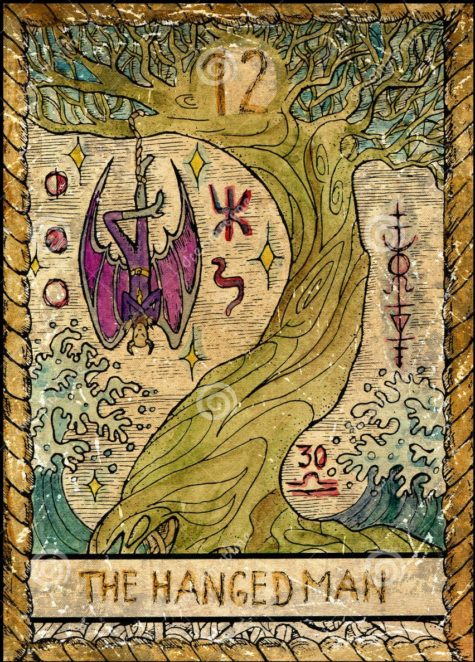 This card reflects the piercing of new barriers and the opening to higher wisdom. It symbolizes a new truth being awakened. It also implies great strength and stamina to handle the ordeals that may beset you as you open to new consciousness. Its message contains the promise of new horizons and unexpected views about to manifest. Meditation upon this card would be most beneficial for those with a bat as a totem.
This card reflects the piercing of new barriers and the opening to higher wisdom. It symbolizes a new truth being awakened. It also implies great strength and stamina to handle the ordeals that may beset you as you open to new consciousness. Its message contains the promise of new horizons and unexpected views about to manifest. Meditation upon this card would be most beneficial for those with a bat as a totem.
The bat is actually a sociable animal. It lives in flocks and thus its appearance usually reflects either a need for more sociability or increased opportunity with greater numbers of people.
The bat has a medicine which awakens great auditory perception. The idea of “blind as a bat” is wrong. Bats are not blind, and their eyes are large and developed. They can easily navigate by sight in lighted situations.
On the other hand, they are expert at maneuvering through the dark. They have a form of sonar in their nose that gives them perfect navigation. Their ability at echo-location enables them to perform amazing flying feats even within the flock. They rarely, if ever, collide. This sonar and echo-location can be linked metaphysically to the gift of clairaudience or clear-hunting. It awakens the ability to hear spirit.
Those with a bat as a totem will also find that they have an increasing ability to discern the hidden messages and implications of other people’s words. Listen as much to what is not being said. Trust your instincts. The nose is the organ of discrimination, and with its sonar located in its nose, the bat reflects the ability to discriminate and discern the truth in other people’s words.
The bat is powerful medicine. It can be trying, but it always indicates initiation – a new beginning that brings promise and power after the changes.
From: Animal Speak by Ted Andrews
The Black Dog is among Britain’s most famous spectral hounds. It may be dangerous and malevolent or helpful and benevolent. It usually serves as a guardian of treasure or a sacred place. If left alone, it usually leaves you alone, too, but if aggression is shown toward it, the Black Dog isn’t afraid to demonstrate supernatural powers, potentially causing terrible wounds, paralysis, or death before vanishing into thin air.
- Manifestation: A shaggy black dog the size of a calf with glowing, red eyes.
- Other names: Moddey Dhoo, Mauthe Doog, Black Shuck, Old Shuck, Old Shock
This ghostly canine is also known as Mauthe Doog, a calf sized black dog who haunts Peel Castle on the Isle of Man. Guards saw the specter so often, they eventually grew less fearful. But, according to lore, one drunk soldier went down a passage in the castle to confront the ghost dog. He came back too terrified to speak and died three days later. The passage was sealed and never used again. Mauthe Doog sightings, however, continued.
Black Shuck
Black Shuck, Old Shuck, Old Shock or simply Shuck is the name given to a ghostly black dog which is said to roam the coastline and countryside of East Anglia, one of many ghostly black dogs recorded in folklore across the British Isles. Accounts of Black Shuck form part of the folklore of Norfolk, Suffolk, the Cambridgeshire fens and Essex, and descriptions of the creature’s appearance and nature vary considerably; it is sometimes recorded as an omen of death, but, in other instances, is described as companionable.
According to the Oxford English Dictionary, the name Shuck derives from the Old English word scucca – “devil, fiend”, from the root word skuh- to terrify. The first mention in print of “Black Shuck” is by Reverend E.S. Taylor in an 1850 edition of the journal Notes and Queries which describes “Shuck the Dog-fiend”;
“This phantom I have heard many persons in East Norfolk, and even Cambridgeshire, describe as having seen as a black shaggy dog, with fiery eyes and of immense size, and who visits churchyards at midnight.”
Images of black sinister dogs have become part of the iconography of the area and have appeared in popular culture. Writing in 1877, Walter Rye stated that Shuck was “the most curious of our local apparitions, as they are no doubt varieties of the same animal.”
Descriptions of Black Shuck vary in both shape and size, from that of a large dog to being the size of a calf or horse. W. A. Dutt, in his 1901 Highways & Byways in East Anglia describes the creature thus:
He takes the form of a huge black dog, and prowls along dark lanes and lonesome field footpaths, where, although his howling makes the hearer’s blood run cold, his footfalls make no sound. You may know him at once, should you see him, by his fiery eye; he has but one, and that, like the Cyclops’, is in the middle of his head. But such an encounter might bring you the worst of luck: it is even said that to meet him is to be warned that your death will occur before the end of the year.
So you will do well to shut your eyes if you hear him howling; shut them even if you are uncertain whether it is the dog fiend or the voice of the wind you hear. Should you never set eyes on our Norfolk Snarleyow you may perhaps doubt his existence, and, like other learned folks, tell us that his story is nothing but the old Scandinavian myth of the black hound of Odin, brought to us by the Vikings who long ago settled down on the Norfolk coast.
Dr Simon Sherwood suggests that the earliest surviving description of devilish black hounds is an account of an incident in the Peterborough Abbey recorded in the Peterborough Chronicle (one version of the Anglo-Saxon Chronicle) around 1127.
This account also appears to describe the Europe-wide phenomenon of a Wild Hunt.:
Let no-one be surprised at the truth of what we are about to relate, for it was common knowledge throughout the whole country that immediately after [Abbot Henry of Poitou’s arrival at Peterborough Abbey] – it was the Sunday when they sing Exurge Quare – many men both saw and heard a great number of huntsmen hunting.
The huntsmen were black, huge and hideous, and rode on black horses and on black he-goats and the hounds were jet black with eyes like saucers and horrible. This was seen in the very deer park of the town of Peterborough and in all the woods that stretch from that same town to Stamford, and in the night the monks heard them sounding and winding their horns.
Reliable witnesses who kept watch in the night declared that there might well have been as many as twenty or thirty of them winding their horns as near they could tell. This was seen and heard from the time of his arrival all through Lent and right up to Easter.”
Abraham Fleming’s account of the appearance of “A strange, and terrible wunder” in 1577 at Bungay, Suffolk is a famous account of the beast.
“A straunge, and terrible Wunder wrought very late in the parish church of Bongay: a town of no great distance from the citie of Norwich, namely the fourth of this August, in the yeere of our Lord 1577. in a great tempest of violent raine, lightning, and thunder, the like wherof hath been seldome seene. With the appeerance of an horrible shaped thing, sensibly perceiued of the people then and there assembled. Drawen into a plain method according to the written copye. by Abraham Fleming.”
One of the most notable reports of Black Shuck is of his appearance at the churches of Bungay and Blythburgh in Suffolk. On 4 August 1577, at Blythburgh, Black Shuck is said to have burst in through the doors of Holy Trinity Church to a clap of thunder. He ran up the nave, past a large congregation, killing a man and boy and causing the church steeple to collapse through the roof. As the dog left, he left scorch marks on the north door which can be seen at the church to this day.
The encounter on the same day at St Mary’s Church, Bungay was described in A Straunge and Terrible Wunder by Abraham Fleming in 1577:
This black dog, or the divel in such a linenesse (God hee knoweth al who worketh all,) running all along down the body of the church with great swiftnesse, and incredible haste, among the people, in a visible fourm and shape, passed between two persons, as they were kneeling uppon their knees, and occupied in prayer as it seemed, wrung the necks of them bothe at one instant clene backward, in somuch that even at a mome[n]t where they kneeled, they stra[n]gely dyed.
Fleming was a translator and editor for several printing houses in London, and therefore probably only published his account based on exaggerated oral accounts. Other local accounts attribute the event to the Devil (Fleming calls the animal “the Divel in such a likeness”). The scorch marks on the door are referred to by the locals as “the devil’s fingerprints”, and the event is remembered in this verse:
All down the church in midst of fire, the hellish monster flew, and, passing onward to the quire, he many people slew.
Dr David Waldron and Christopher Reeve suggest that a fierce electrical storm recorded by contemporary accounts on that date, coupled with the trauma of the ongoing Reformation, may have led to the accounts entering folklore.
Littleport, Cambridgeshire is home to two different legends of spectral black dogs, which have been linked to the Black Shuck folklore, but differ in significant aspects: local folklorist W.H. Barrett relates the story of a huge black dog haunting the area after being killed rescuing a local girl from a lustful friar in pre-reformation times, while fellow folklorist Enid Porter relates stories of a black dog haunting the A10 road after its owner drowned in the nearby River Great Ouse in the 1800s.
Sources:
This is a by no means complete list of the animals, mortal and supernatural, that were sacred to the ancient Egyptians, along with the deities they were considered to be sacred to. Pictures or statues of these creatures used during rituals will enable the subconscious mind to make a better link, thereby enhancing the ritual’s power.
- Asp – Buto
- Ass – Set
- Ape – Thoth
- Bull – Ptah, Menthu, Min
- Cat – Bast, Mut
- Cobra – Buto
- Cow – Hathor, Sati, Mut
- Crocodile – Sebe, Set
- Dog – Anubis
- Frog – Heqet, Hathor
- Goose – Amen-Ra, Seb, Isis
- Hawk – Osiris, Horus, Ra, Seker, and others
- Heron – Sacred in general
- Hippopotamus – Ta-Urt, Set
- Ibis – Thoth
- Jackal – Anubis
- Lion – Sekhmet, Mut
- Lynx – Benevolent Spirit
- Phoenix – Osiris
- Pig – Set
- Ram – Ba-Neb-Tetet, Khnemu
- Scarab – Khepera
- Scorpion – Selqet, Set
- Serpent – Apep, Buto, Renenet
- Shrew-Mouse – Buto
- Sphinx – Ra-Temu
- Swallow – Isis
- Tortoise or Turtle – Enemy of Ra
- Vulture – Nekhebet, Mut, Neith, and others
- Wolf – Wepwawet
The Easter Bunny has its origin in the tradition of honoring of rabbits during spring as an animal sacred to the goddess Eostre. According to lore, she is the goddess of spring who presides over the birth of babies, both animal and human, and of the pollination, flowering and ripening of fruits in the plant kingdom.
The modern belief that eggs are delivered by a rabbit, comes from a popular Pagan legend about Eostre. According to the legend, Eostre was walking one fine spring day and came upon a beautiful little bird. The poor bird’s wing was badly injured and Eostre, feeling great compassion for the little creature, wanted to heal it. But the little bird’s wing was so badly damaged that Eostre knew it would never be able to fly again even after she healed it.
Eostre decided to help the bird by healing it in a way that would give it mobility and a little something more; she turned it into a rabbit. During the transformation, the rabbit retained the ability to lay eggs.
The rabbit was so grateful to Eostre for saving her life that she laid a sacred egg in Eostre’s honor. The rabbit decorated the egg and then presented it to the Goddess. She was so pleased by the rabbit’s gift that she wished all humankind to share in her joy.
In honoring her wishes, the rabbit went all over the world distributing beautifully decorated little gifts of life and continues to do so even today.
For modern Pagans, Ostara is a sabbat of light, of humor, of celebrating and growing. It’s considered to be a time for balancing the light and dark, for starting new paths. These are concepts that all people, even those with different religious beliefs, can appreciate.
Source: When God Was A Woman
